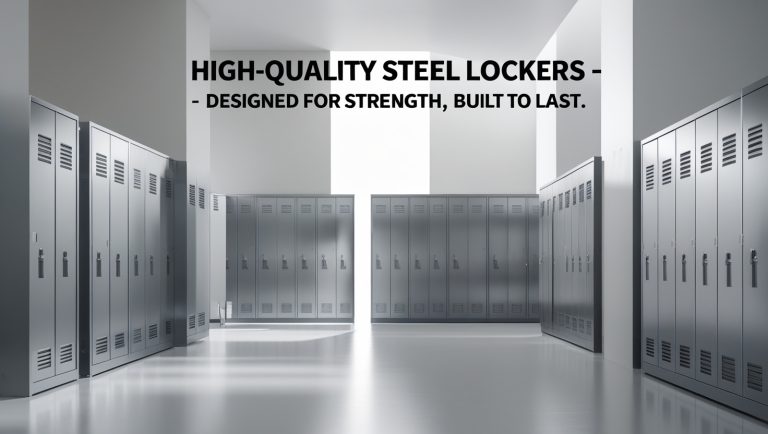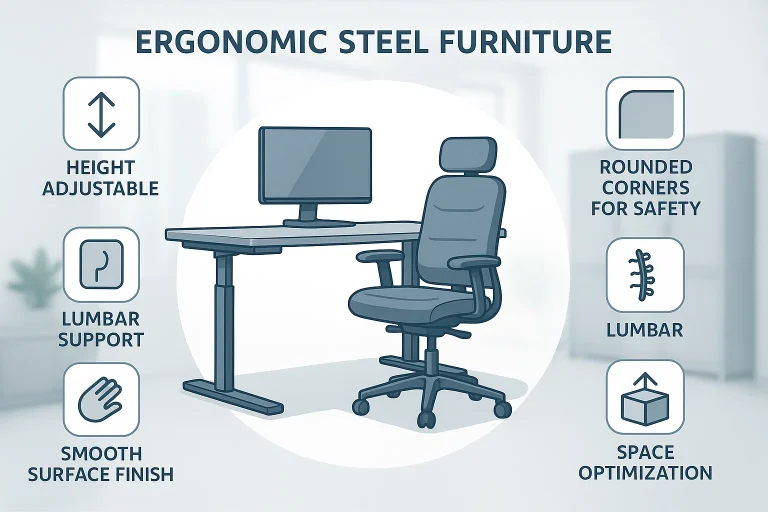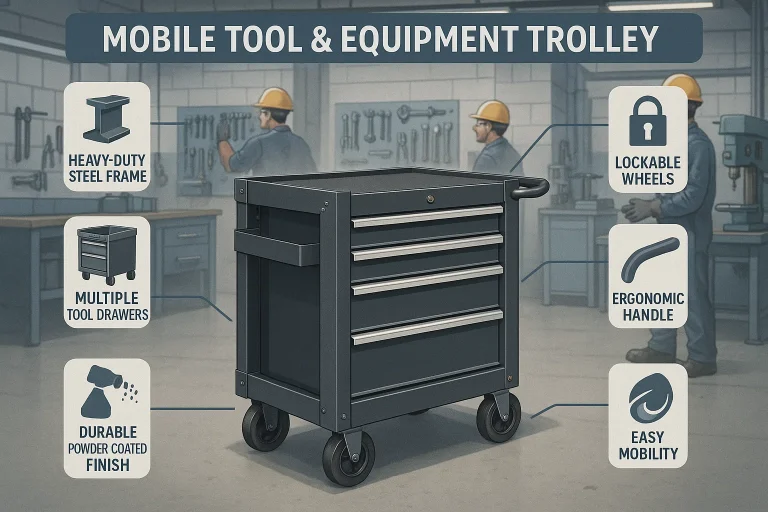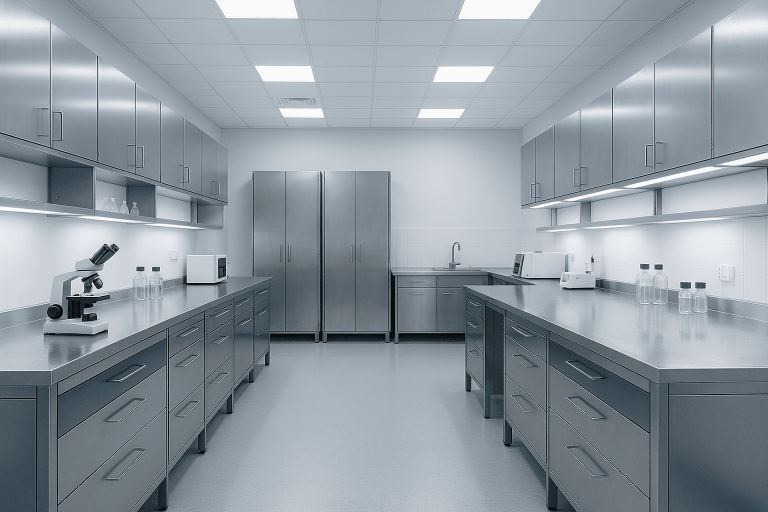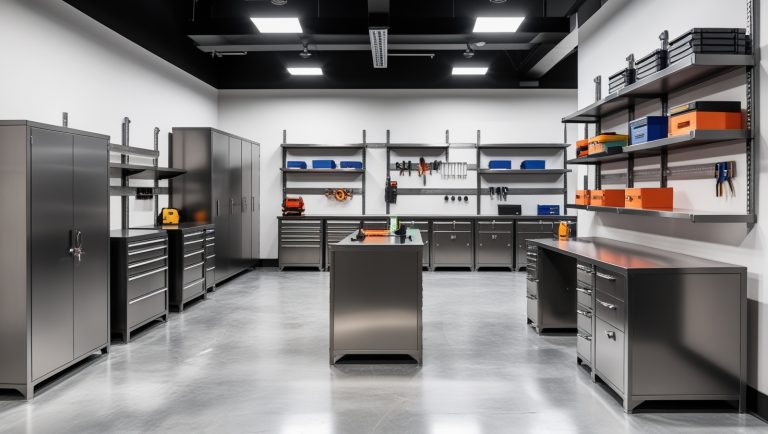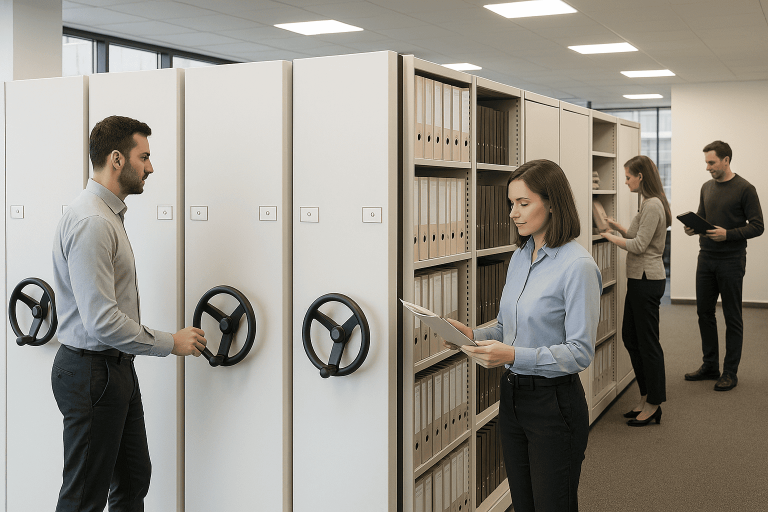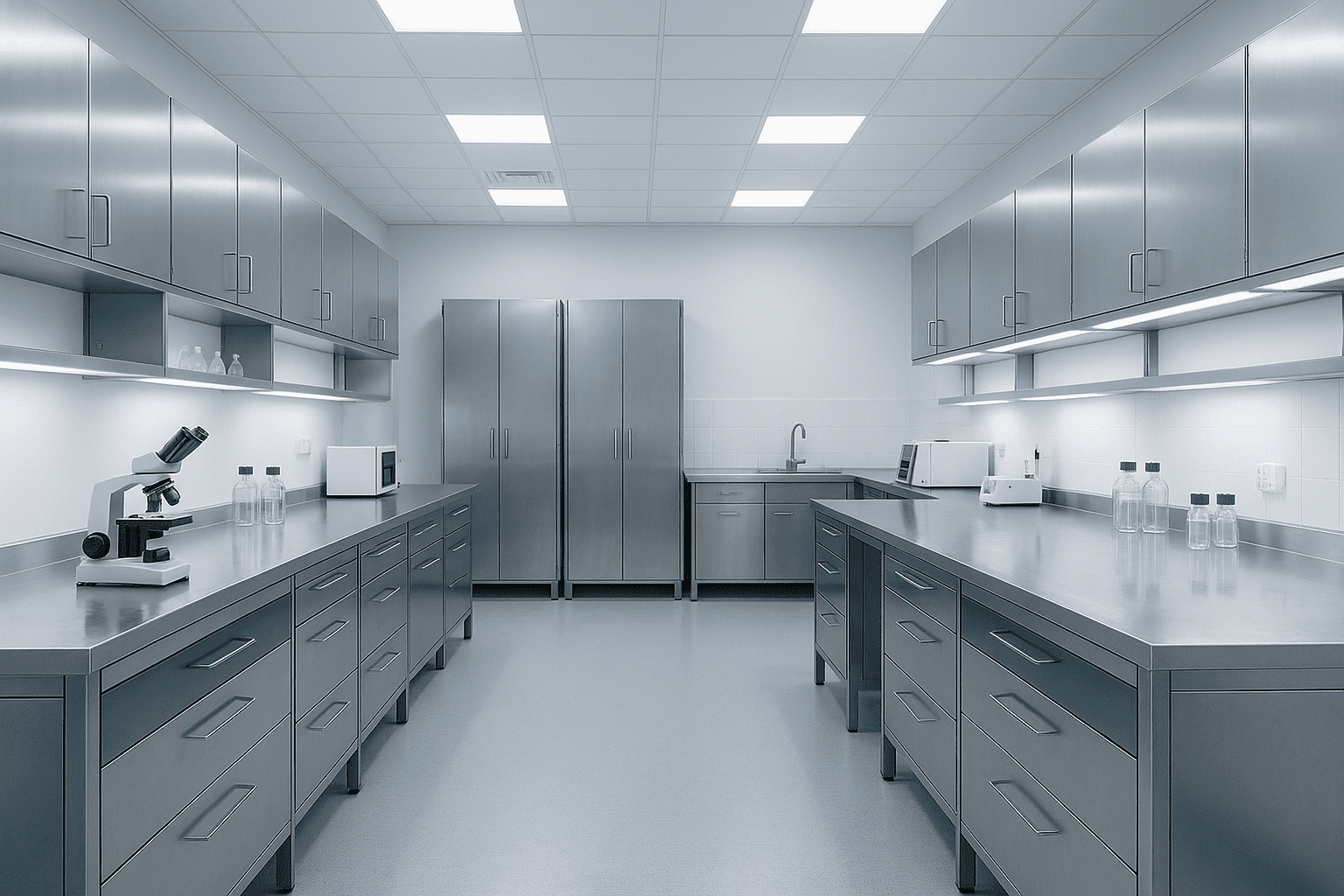
In today’s modern world, steel furniture has become an essential part of both commercial and industrial spaces. Its popularity is growing rapidly because of its strength, long life, and modern design appeal. Whether you are setting up a laboratory, office, hospital, or home, steel-based furnishings offer unmatched durability and reliability. Let’s explore the different types of steel furniture and understand their numerous benefits in various environments.
Introduction to Steel Furniture
Furniture made from steel offers a combination of style and strength that other materials often cannot match. It is not only sleek and easy to maintain but also highly functional in heavy-use areas. In laboratories and industrial setups, the use of laboratory safety systems is often supported by durable and corrosion-resistant steel furniture, ensuring hygiene and safety standards. Over time, innovations in design and manufacturing have expanded the scope of where steel furniture can be used — from heavy-duty workstations to elegant modular pieces.
1- Stainless Steel Furniture
Stainless steel furniture is one of the most widely used options across industries. It is highly resistant to rust, chemicals, and moisture, making it perfect for humid or high-temperature environments such as laboratories, hospitals, and kitchens.
Advantages:
- Corrosion Resistance: Stainless steel’s chromium coating protects it from rust and chemical damage.
- Hygienic Surface: It’s easy to clean and disinfect, making it ideal for places that require sterile conditions.
- Aesthetic Appeal: Offers a clean, polished look that fits modern interior designs.
- Durability: Lasts for decades with minimal maintenance.
In laboratory and research environments, stainless steel furniture supports laboratory safety systems by preventing contamination and ensuring safe, clean work surfaces.
2- Mild Steel Furniture
Mild steel furniture is commonly used in offices, educational institutions, and storage solutions. It is made from low-carbon steel, which is easy to shape, weld, and paint. While it is not as corrosion-resistant as stainless steel, applying powder coating or paint enhances its life and appearance.
Advantages:
- Cost-Effective: More affordable compared to other types of steel furniture.
- Customizable: Easy to design and modify based on space and functional requirements.
- Strong and Stable: Offers structural strength for shelving, tables, and filing cabinets.
- Recyclable: Environmentally friendly, as it can be melted and reused.
3- Powder-Coated Steel Furniture
Powder-coated steel furniture is a popular choice for offices, laboratories, and educational facilities. The powder coating process adds a protective layer that prevents rust, scratches, and wear, while also offering aesthetic flexibility.
Advantages:
- Enhanced Durability: The coating protects the furniture from weathering and mechanical damage.
- Variety in Design: Available in various colors and finishes to match interior themes.
- Low Maintenance: Requires minimal cleaning and upkeep.
- Corrosion Protection: Extends the lifespan of steel furniture in humid environments.
This type of furniture is ideal for places where visual appearance and resilience are equally important, such as modern laboratory and corporate spaces.
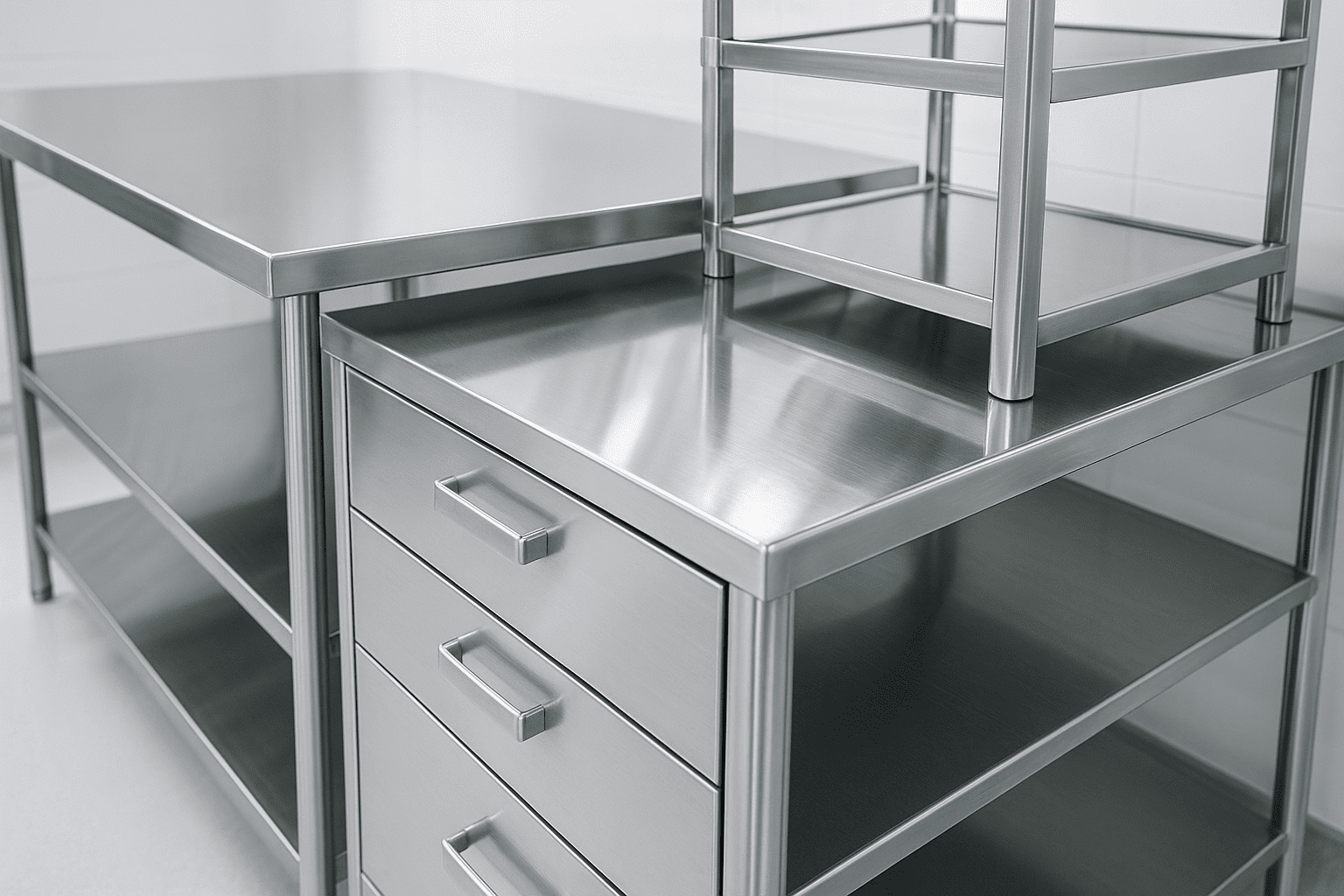
4- Modular Steel Furniture
Modular steel furniture is designed to be flexible and adaptable to different spaces. These pieces can be rearranged, expanded, or moved according to changing needs, making them perfect for dynamic workplaces.
Advantages:
- Space-Saving: Designed to fit into compact or multi-functional spaces.
- Flexible Design: Can be expanded or reduced based on future requirements.
- Easy Installation: Components can be assembled and disassembled quickly.
- Modern Appeal: Gives offices and labs a sleek, professional look.
In labs, modular designs often integrate seamlessly with laboratory safety systems, allowing for easy installation of exhaust systems, fume hoods, and safety equipment.
5- Industrial Steel Furniture
Industrial-grade steel furniture is built for high-load capacity and frequent use. This category includes workbenches, storage racks, lab tables, and heavy-duty cabinets. It’s made from thicker steel sheets or tubes to ensure long-term strength and endurance.
Advantages:
- High Strength: Capable of handling heavy machinery or laboratory equipment.
- Safety-Oriented: Designed with stability and load-bearing in mind to avoid accidents.
- Long-Term Investment: Withstands daily wear and tear even in tough environments.
- Low Maintenance: Requires little upkeep and retains performance for years.
Industrial furniture ensures the efficient functioning of research and production environments while maintaining user safety and comfort.
6- Hospital and Laboratory Steel Furniture
Steel furniture plays a critical role in the medical and scientific sectors. Laboratory tables, biosafety cabinets, trolleys, and storage units made of steel ensure cleanliness and safety. The material’s non-porous nature prevents the growth of microbes, aligning perfectly with health and safety regulations.
Advantages:
- Hygienic: Steel surfaces resist microbial growth.
- Chemical Resistance: Safe against spills and chemical exposure.
- Stable and Reliable: Supports sensitive instruments without vibration or movement.
- Compliance: Meets standards required for laboratory safety systems.
Hospitals, pharmaceutical labs, and research facilities rely on steel furniture to maintain a sterile, durable, and efficient workspace.
7- Outdoor and Commercial Steel Furniture
In outdoor and commercial environments such as parks, cafeterias, or canteens, steel furniture stands up well to varying weather conditions. It can be designed with galvanized or powder-coated finishes to prevent rust and deterioration.
Advantages:
- Weather Resistance: Withstands rain, heat, and humidity.
- Low Maintenance: Easy to clean and maintain compared to wooden furniture.
- Sustainability: Made from recyclable materials, supporting green building standards.
- Long Life: Can last for years even in outdoor conditions.
This makes steel a preferred material for urban projects and public-use areas that require durability with minimal maintenance.
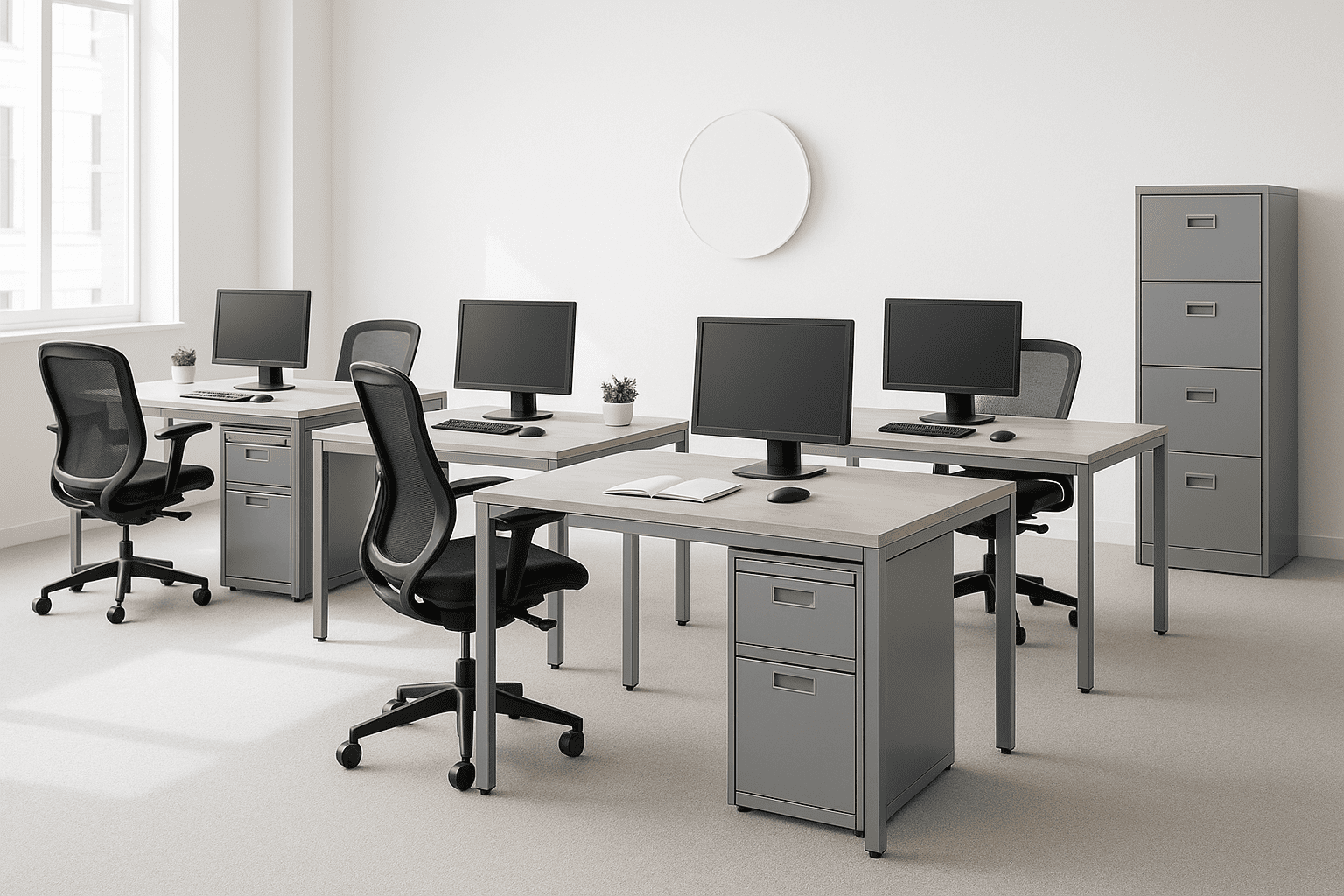
Key Benefits of Steel Furniture
To summarize, the major benefits of using steel furniture and their advantages include:
- Durability and Longevity: Steel lasts much longer than wood or plastic furniture, providing great value for money.
- Safety and Hygiene: Especially in labs and hospitals, steel helps maintain cleanliness and supports safe work environments.
- Design Versatility: Available in various finishes, colors, and forms to suit both industrial and modern interiors.
- Eco-Friendly: Steel can be recycled and reused, reducing environmental impact.
- Fire and Pest Resistance: Unlike wood, steel doesn’t attract pests or contribute to fire hazards.
Conclusion
As industries evolve, the demand for durable and adaptable furniture continues to grow. From laboratories that rely on laboratory safety systems to offices and commercial spaces, steel has proven to be the most reliable and versatile material. Understanding the various types of steel furniture helps in selecting the right option for your environment — one that ensures functionality, safety, and long-term value.
Whether it’s for industrial strength, modular design, or hygienic performance, steel furniture stands as a timeless solution that combines practicality with modern aesthetics. By investing in quality designs, organizations can enhance productivity, maintain safety, and create efficient workspaces built to last.

